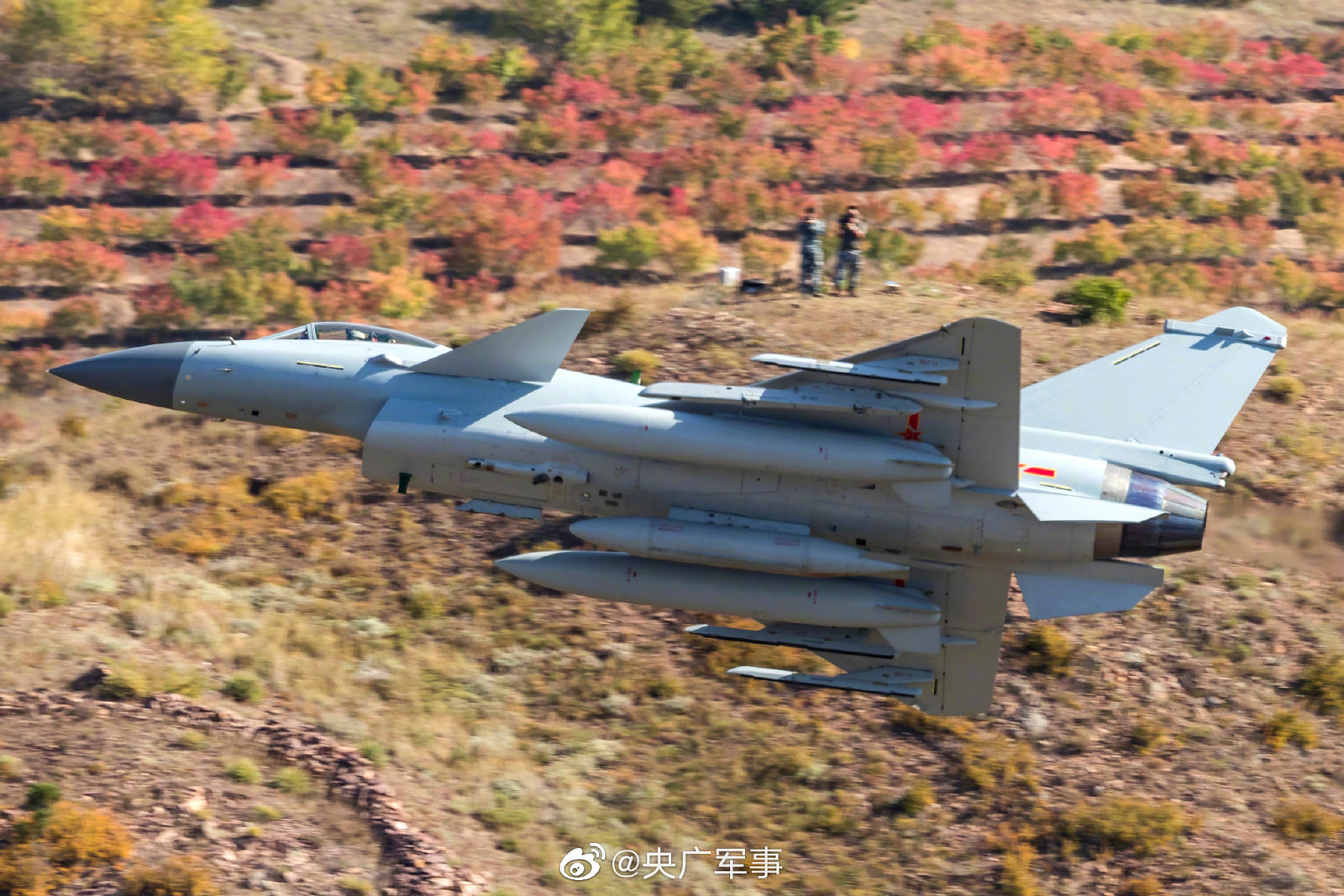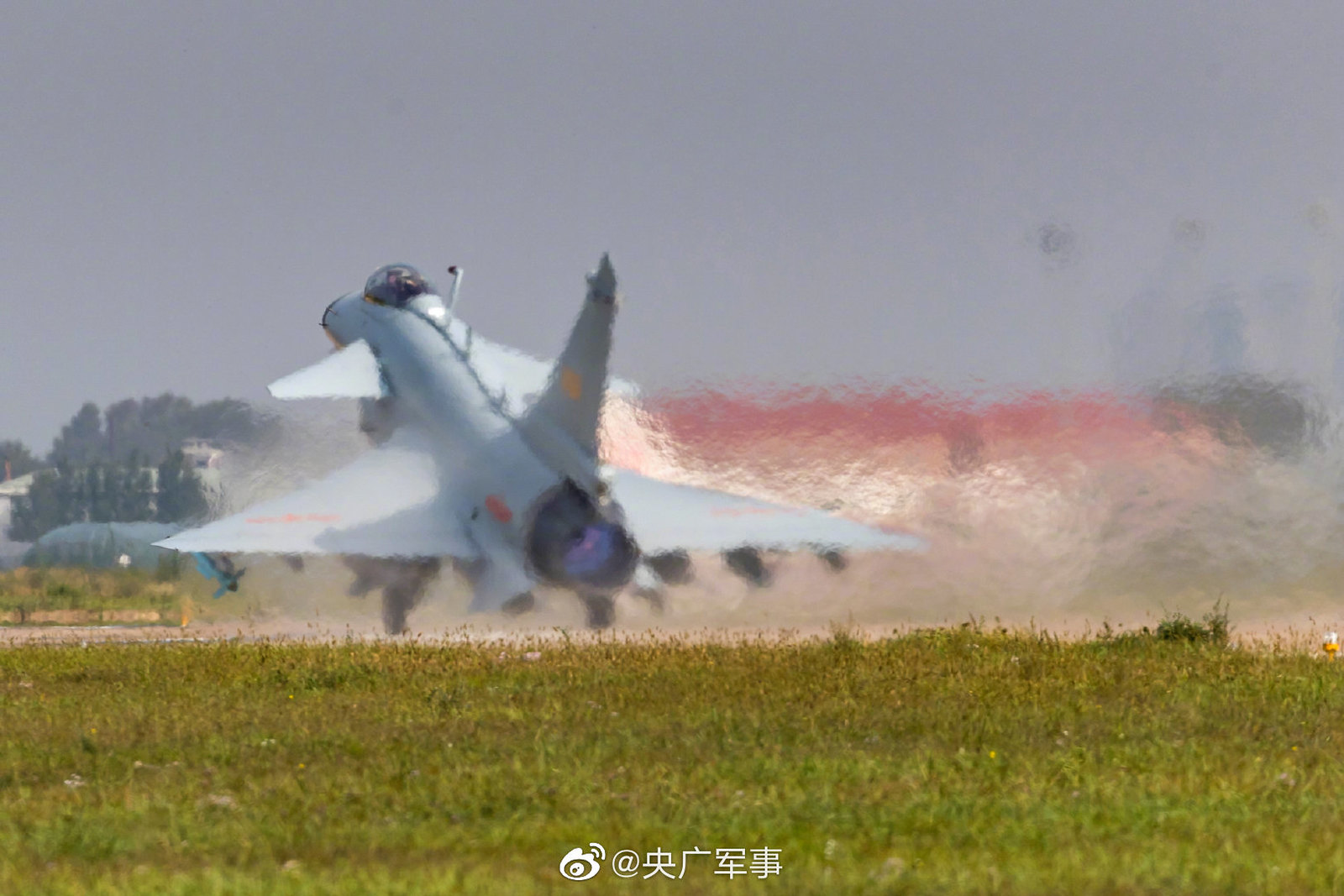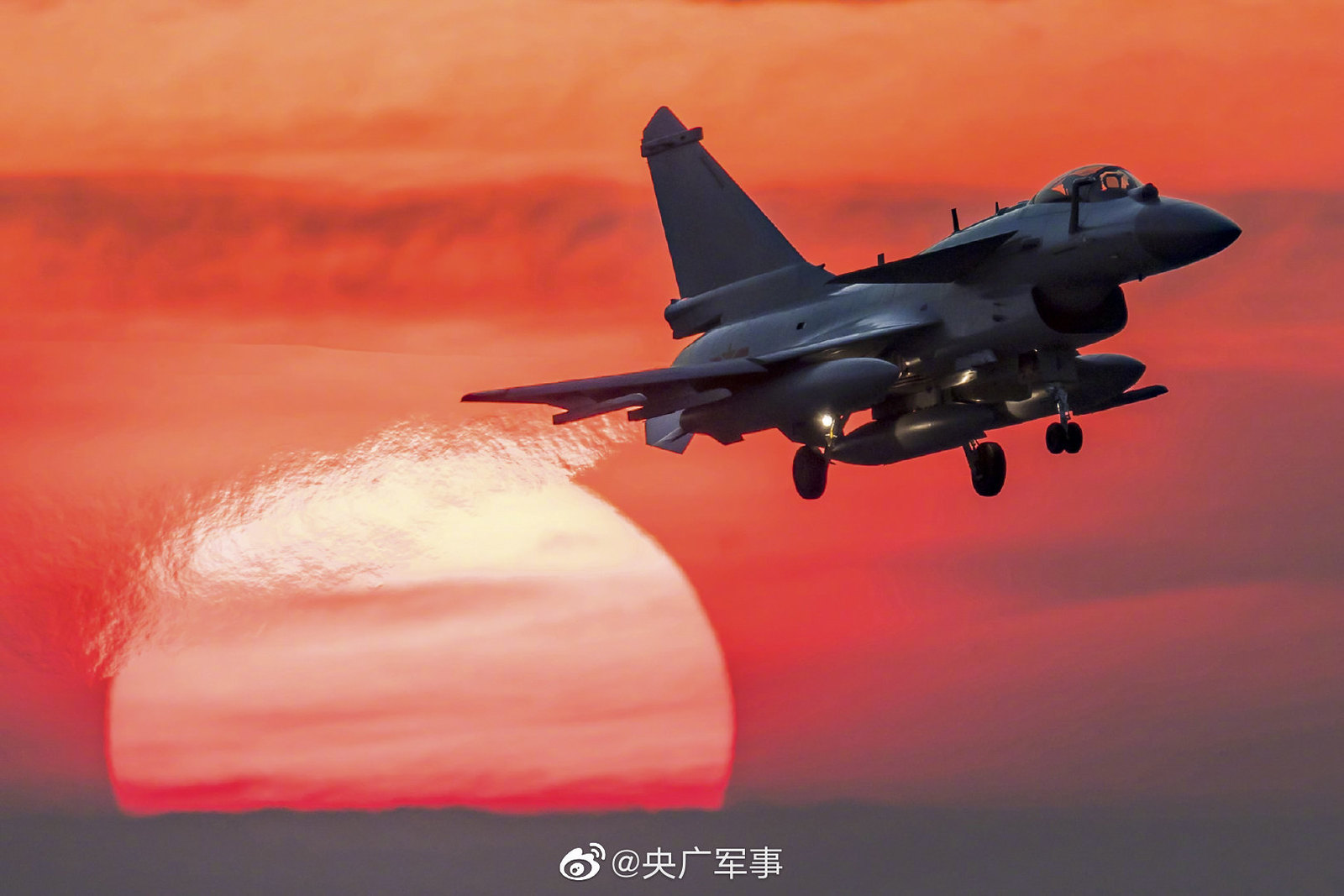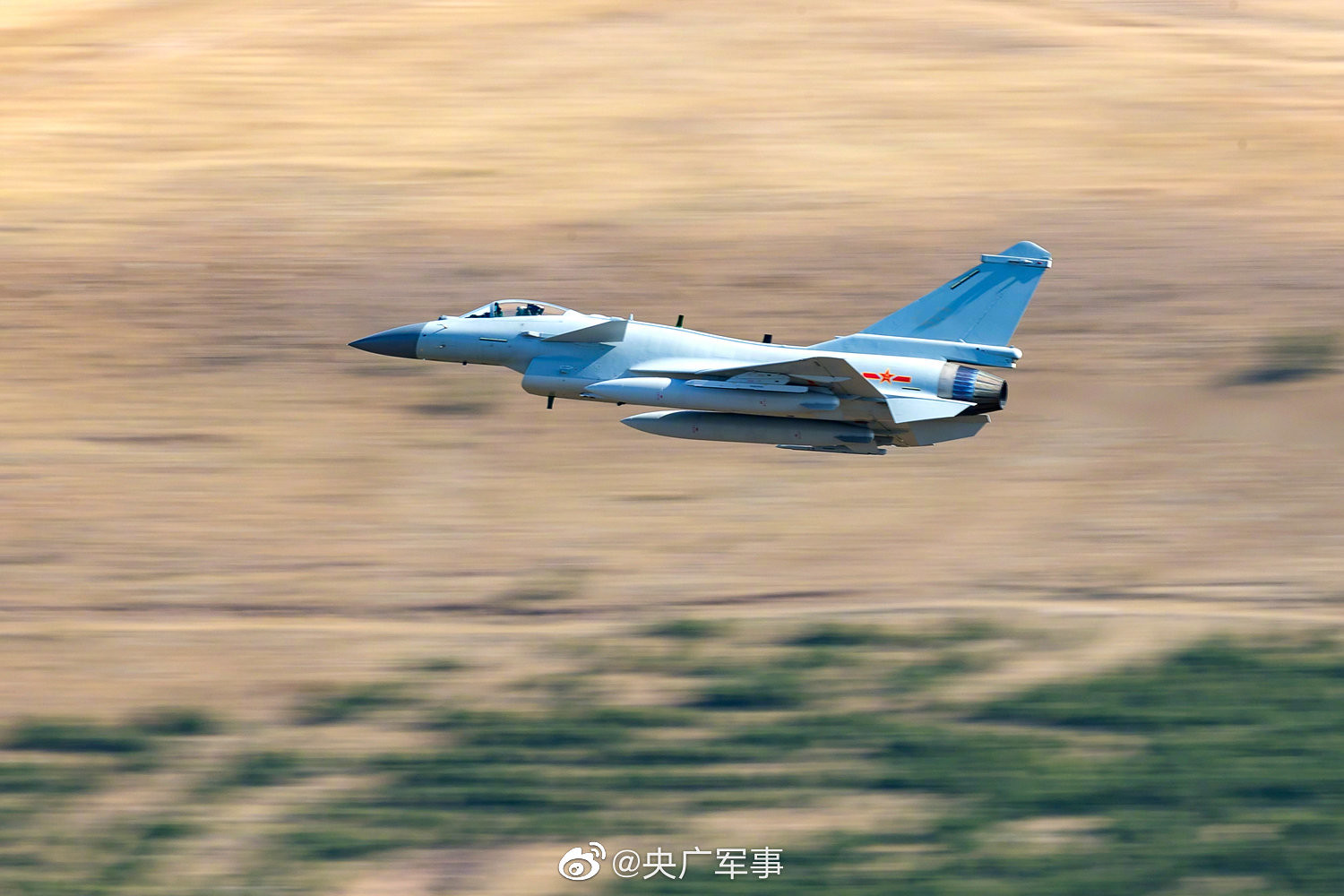You are using an out of date browser. It may not display this or other websites correctly.
You should upgrade or use an alternative browser.
You should upgrade or use an alternative browser.
J-10 Thread IV
- Thread starter Jeff Head
- Start date
yuxiaochen
Junior Member
pretty pretty plane
Just in case anyone feels a bit bored ... 
... and the following replies to my post:
... in the end I gave up!
... and the following replies to my post:
... in the end I gave up!
Well, “you can’t wake a person who is pretending to be asleep”Just in case anyone feels a bit bored ...
... and the following replies to my post:
... in the end I gave up!
MastanKhan
Junior Member
Just in case anyone feels a bit bored ...
... and the following replies to my post:
... in the end I gave up!
Hi,
From the american F16 to the Japanese F-2 fighter---. What about that difference in design
The function utility of the design changes with your ability and capability ---. The materials that you have---the strength of those materials---the power plant that you have and the out put of that power plant to what your need is---the arena that you want to fly in and how you want to equip your aircraft---.
The utility was the primary reason the japanese rejected the F16 and built an F2---. They knew that being an island nation---their primary battles would be against enemy naval ships---and they wanted their aircraft to carry a minimum of two heavy anti ship missiles---which the F16 could not do as it was primarily not designed for that task---. Ended up as 25% larger aircraft---.
Here is a quote from Popular Mechanics about the J10 being a copy of the Lavi and then other articles of news outlets---it goes a bit further
"
Chengdu J-10 and U.S. F-16

VCG AND USAF PHOTOGETTY IMAGES
In the 1980s, the U.S. partnered with Israel to develop a new combat aircraft based on the General Dynamics F-16. But as costs rose, the U.S. pulled out of the deal, leaving Israel’s “Lavi” fighter unfinished. American officials discovered that Israel sold the Lavi’s development plans to China, granting them unprecedented access to technologies first developed for the F-16.
The J-10 shared more than a striking visual resemblance with the F-16. The technology sourced through Israel allowed China to advance significantly over the 1960s era fighters they were fielding at the time. This would not be the last Chinese fighter to incorporate elements of the F-16, but it's the most direct.
An updated version of the J-10 entered into service last year with an advanced fire control radar array, an increased use of composite materials to reduce weight, and a number of other domestically developed updates that aim to keep the J-10 capable for decades to come".
Both the Lavi and the J-10 are 4th Gen aircraft designs---so the similarity in the shape form and function just did not happen to be---. Like someone compares the JF17 which is a 4th gen aircraft by design to the mig21---F7PG---super sabre etc etc etc which were gen 3 designs.
Another question to you Deino is---why you are so vehemently denying the the fact that J10 is re-birth of the Lavi without giving any technical reasons---or industry examples---.
Why do you chose a condescending tone when addressing this issue even though according to you---you have no engineering back ground of any kind---.
I would really like to dig into the purpose you have for the denial---not in rhetoric form---but from an engineering stand point---.
Model of aircraft in 1982 made by CAC.


What looks closer to real J-10, Lavi or the given model?
Finally, the influence on a given design(J-10A) isn't a copy.

What looks closer to real J-10, Lavi or the given model?
Finally, the influence on a given design(J-10A) isn't a copy.
Model of aircraft in 1982 made by CAC.


What looks closer to real J-10, Lavi or the given model?
Finally, the influence on a given design(J-10A) isn't a copy.

One interesting thing I noticed about the model is that there are short range missiles mounted on hard points right below the intake. Too bad this isn’t carried over to production aircraft.
Hi,
From the american F16 to the Japanese F-2 fighter---. What about that difference in design
The function utility of the design changes with your ability and capability ---. The materials that you have---the strength of those materials---the power plant that you have and the out put of that power plant to what your need is---the arena that you want to fly in and how you want to equip your aircraft---.
The utility was the primary reason the japanese rejected the F16 and built an F2---. They knew that being an island nation---their primary battles would be against enemy naval ships---and they wanted their aircraft to carry a minimum of two heavy anti ship missiles---which the F16 could not do as it was primarily not designed for that task---. Ended up as 25% larger aircraft---.
Here is a quote from Popular Mechanics about the J10 being a copy of the Lavi and then other articles of news outlets---it goes a bit further
"
Chengdu J-10 and U.S. F-16

VCG AND USAF PHOTOGETTY IMAGES
In the 1980s, the U.S. partnered with Israel to develop a new combat aircraft based on the General Dynamics F-16. But as costs rose, the U.S. pulled out of the deal, leaving Israel’s “Lavi” fighter unfinished. American officials discovered that Israel sold the Lavi’s development plans to China, granting them unprecedented access to technologies first developed for the F-16.
The J-10 shared more than a striking visual resemblance with the F-16. The technology sourced through Israel allowed China to advance significantly over the 1960s era fighters they were fielding at the time. This would not be the last Chinese fighter to incorporate elements of the F-16, but it's the most direct.
An updated version of the J-10 entered into service last year with an advanced fire control radar array, an increased use of composite materials to reduce weight, and a number of other domestically developed updates that aim to keep the J-10 capable for decades to come".
Both the Lavi and the J-10 are 4th Gen aircraft designs---so the similarity in the shape form and function just did not happen to be---. Like someone compares the JF17 which is a 4th gen aircraft by design to the mig21---F7PG---super sabre etc etc etc which were gen 3 designs.
Another question to you Deino is---why you are so vehemently denying the the fact that J10 is re-birth of the Lavi without giving any technical reasons---or industry examples---.
Why do you chose a condescending tone when addressing this issue even though according to you---you have no engineering back ground of any kind---.
I would really like to dig into the purpose you have for the denial---not in rhetoric form---but from an engineering stand point---.
I think you are misunderstanding the situation. "We" as in the ones who disagree with J-10 being a direct, total copy of Lavi, do have members (in fact probably most) who believe the J-10 is indeed at some point based on the Lavi and possibly changed so much after this point it evolved to be even greater in difference between F-16 and F-2. The CAC J-10 program certainly benefited from Lavi but the CAC J-10 program also benefited from CAC J-9 program and J-8 canard experimental prototypes. The other guys believe the J-10 is 1:1 a Lavi which is blatantly untrue even for the exterior. Just like a J-16 is not 1:1 a Su-30 because all the innards are different... even some exterior features of difference for example the materials and the manufacturing processes. The J-16 is a remarkably different aircraft to Su-30 just from the internal components alone and the J-10 can be called a Lavi? Okay certainly these same people will call J-16 a watered-down Su-30 lol. Instead what should be said is the J-11, J-15, J-16 platforms DO indeed copy the flanker series nearly 1:1 and eventually adopted Chinese electronics and weapons over time, starting from J-11B. The J-10 however are not copies of the Lavi in this definition.
The truth is the J-10 benefited from development of J-9, J-8 canard studies, and Lavi. But the J-10 is not a J-9 or a J-8 with canards or a Lavi. The entire weight distribution between J-10 and Lavi is more different than the Lavi and Gripen (both have very similar dimensions and loading structures and similar engine weight and output). The J-10 is considerably longer and heavier. Whatever aerodynamic work on the Lavi cannot be used directly on the J-10. Perhaps the work offered some assistance if nothing more than verifying CAC's own research. To say nothing of even greater differences in things not copied or shared like avionics, FCS (developed with variable and unknown amount of assistance from Israel and Russia), engine, weapons systems, radar, ECM, EW suite, communication. Even the bloody inlet of J-10A and Lavi are very different geometries inside and out. Hint, there's much more to variable geometry intakes than appearances... there's a whole host of mechanisms involved at different speeds, AOA, and gauge pressures. The Lavi's intakes seem very similar to F-16's while the J-10A's intakes shape is different yet. DSI of J-10b and J-10c are obviously changes yet again.
Last edited:
Hi,
From the american F16 to the Japanese F-2 fighter---. What about that difference in design
The function utility of the design changes with your ability and capability ---. The materials that you have---the strength of those materials---the power plant that you have and the out put of that power plant to what your need is---the arena that you want to fly in and how you want to equip your aircraft---.
The utility was the primary reason the japanese rejected the F16 and built an F2---. They knew that being an island nation---their primary battles would be against enemy naval ships---and they wanted their aircraft to carry a minimum of two heavy anti ship missiles---which the F16 could not do as it was primarily not designed for that task---. Ended up as 25% larger aircraft---.
Here is a quote from Popular Mechanics about the J10 being a copy of the Lavi and then other articles of news outlets---it goes a bit further
....
Honestly, why am I not surprised that you again pop up with such old and stupid reports? I know, we already had this discussion several times and again I will refrain: It depend on what you call a copy or clone! IMO - as having studies Chemistry and Biology - a clone is a 1:1-copy of something. As such it has to be identically in nearly every aspect: Size, shape, structure, materials and so on, and here a simple look telly me that they are not copied clones.
How could a fighter about 1/3 larger with a much heavier, more powerful engines, with vastly larger external dimensions and a different wing geometry be a clone? It would be to tell you cloned a sparrow and the result looks like a chicken.
But again, since you even claim, the FC-31 is nothing but an exact replica of the F-35 only with two engines, I think we can put this discussion to an end.

Both the Lavi and the J-10 are 4th Gen aircraft designs---so the similarity in the shape form and function just did not happen to be---. Like someone compares the JF17 which is a 4th gen aircraft by design to the mig21---F7PG---super sabre etc etc etc which were gen 3 designs.
Another question to you Deino is---why you are so vehemently denying the the fact that J10 is re-birth of the Lavi without giving any technical reasons---or industry examples---.
Why do you chose a condescending tone when addressing this issue even though according to you---you have no engineering back ground of any kind---.
I would really like to dig into the purpose you have for the denial---not in rhetoric form---but from an engineering stand point---.
Again a typical reply from you and as it seems you either don't want or your cannot read properly; most likely you did not even read the whole conversation since all important for you is, you can argue again?
Therefore let's try again:
I don't deny that they are SIMILAR,
I don't deny that there were CONNECTIONS,
I don't deny that the design is INFLUENCED, and ..
I don't deny that IAI provided ASSISTANCE and CONSULTATION.


But I strongly deny that the J-10 is a close derivative of the Lavi. Did you ever read John Golan's book, which is often quoted as the ultimate Lavi-reference, where he even explains in terms of structural and technical reasons you asked for?

The fact is, that China was not able to produce a comparable composite/CFK wing and structure and therefore had to alter the original design in order to fit the own materials and manufacturing techniques available as well as to cope with the higher loads due to the new engine and the changed main role (Lavi was aimed as a small striker, air-to ground focused type, whereas the J-10 was to be a fighter with multicole capabilities).
Ergo, the design evolved into something very different. It became larger, heavier, externally different ... ergo: it cannot be a copy or clone.
Not sure what you want to hear, but again I get the feeling from you that - comparable to Jon Lake's stance - there is only black and white: It looks similar, so it must be a copy and esp. if there are some stupid US based reports, which are politically biased and eagerly pick up such unreflected copy-claims to feed their own readers, you believe it instantly: The J-10 is a Lavi, the J-20 is a Raptor mixed with Mikoyan's MFI, the FC-31 a clone of the F-35 and so on.
By that logic even a Boeing 767 is a clone of the original 737 and since Airbus came up later the A320 and A330 too. Ridiculous!
As a summary; what is your intention? I don't deny that vehemently as you suggest and I gave you several - indeed by my limited understanding - technical explanations, why the J-10 is not a Lavi-clone. As such it all again depends on definition of copy or clone: If you think "similar, influenced and based on" is already a clone, then you might be correct, if a clone however has to be a 1/1 copy, then you are clearly wrong. I also often said - and that would fit your wording "re-birth of the Lavi" a meaning I could agree with: The J-10 is comparable IMO to the evolution from the original YF-17 LWF to the current Hornet, maybe even Super Hornet. Both are similar, but differe completely in sice, dimensions, weight, engines, capabilities, certain design features and structure. Yes, the SH is a re-birth of the original YF-17, but they are not clones and the same applies for the Lavi-J-10 connection.
Therefore I kindly as you for the same in reverse:
Please provide any explanation "from an engineering stand point", that regardless all size. structural and dimensional changes the J-10 still MUST be regarded a Lavi-clone and why you are so vehemently persist on the theory the J10 is clone/copy of the Lavi without giving any technical reasons and even against all differences?
Deino










